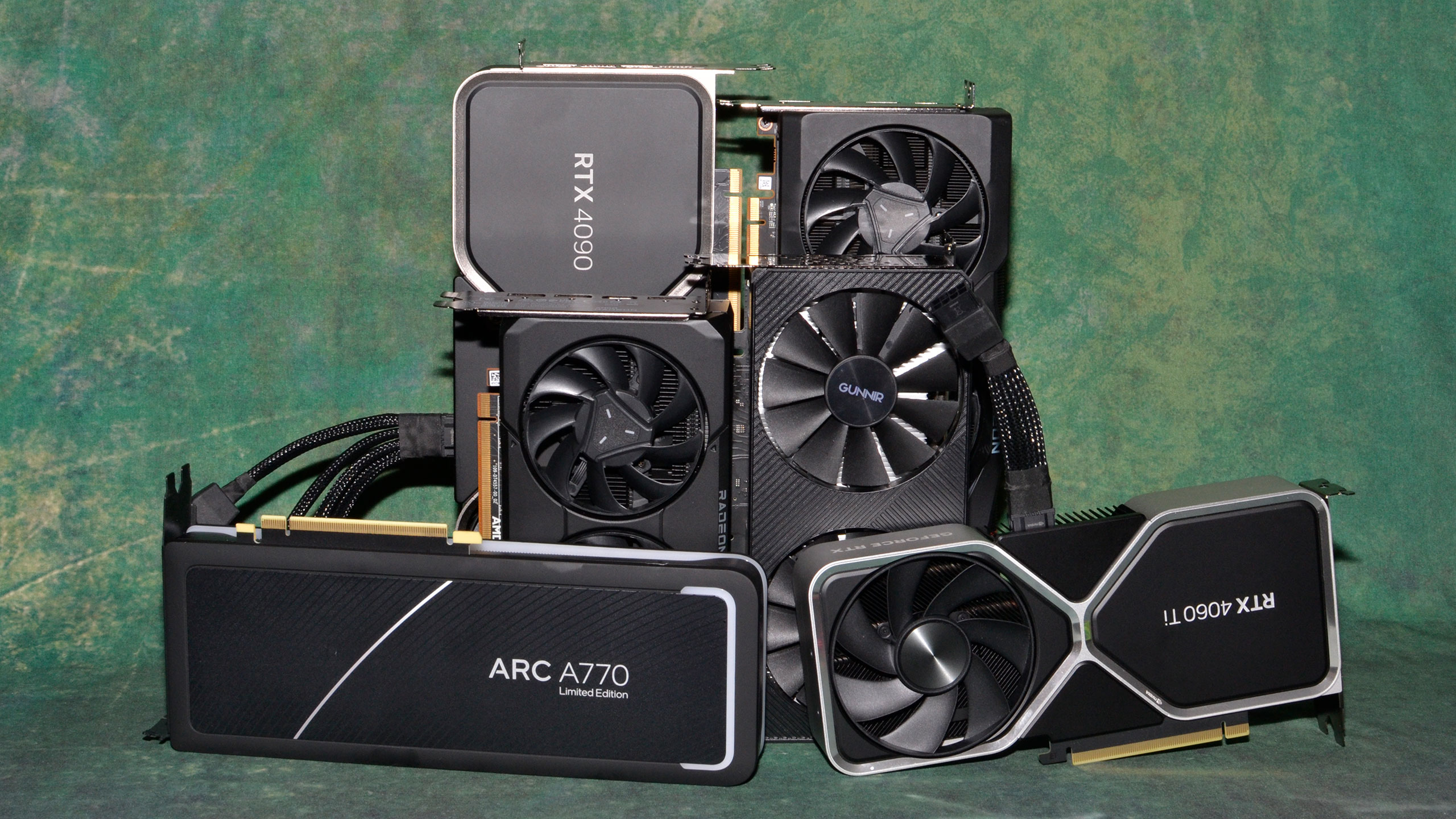Gaming GPU sales plummet 14.5% in third quarter — Nvidia's RTX 5000-series launch looms large

According to analysts from Jon Peddie Research, sales of dedicated GPUs dropped 14.5% in Q3 2024 from Q2. The market decline, trouncing traditional market behavior of sales increases in the third quarter, is largely due to consumers waiting for Nvidia and AMD's next-gen offerings, both likely to be announced in January 2025.
Discrete graphics cards, referred to as "AIBs" (add-in boards) in JPR's release, are having their worst sales since Q2 2023, which came at the end of a year-long downturn. Q3 2024 AIB shipments reached 8.1 million units, primarily buoyed by 20.1 million desktop PC CPU shipments.
Within Q3 2024's downturn for AIBs, Nvidia took a 2% market share from AMD since Q2, going from an 88%/12% split to 90%/10% in three months (Intel still sits at 0%). This "slight flip" hasn't impacted greater market dynamics but is still a sign of Nvidia's dominance in the sector.

The attach rate of desktop CPUs and discrete GPUs also fell incrementally year-over-year and quarter-by-quarter. Desktop CPU and GPU shipments at 20.1 million/8.1 million represents a drop from a 19m/9m relationship in Q3'23 and 14m/10m last quarter, representing a -26.9% change from Q2. Integrated graphics solutions rising in power and dedicated GPUs rising in price are likely culprits in this, as well as general market hesitance to buy what is about to be last-gen cards.
The most concerning part of JPR's research is its forecast for the future of discrete GPU sales in the coming years. From 2024 to 2028, GPU add-in boards are estimated to have a compound annual growth rate of -6.0%. This is mainly due to the heavy tariffs U.S. President-elect Donald Trump has promised to bring with him into his second term, which is expected to raise consumer laptop and electronic prices by 45%.
"We think the tariffs and lack of matching wage increases in the next two years will drive the U.S. economy into a recession," said Jon Peddie, director of Jon Peddie Research. "Our long-term CAGR forecast is gloomy... other nations will feel the implications as consumers pull back their spending.”
Get Tom's Hardware's best news and in-depth reviews, straight to your inbox.

Sunny Grimm is a contributing writer for Tom's Hardware. He has been building and breaking computers since 2017, serving as the resident youngster at Tom's. From APUs to RGB, Sunny has a handle on all the latest tech news.
-
vanadiel007 Yes, blame it on tariffs when prices of a video card are $1,500 before tariffs take effect.Reply
Just lay blame where it should: overpriced hardware and people are having enough of it. -
usertests ReplyNvidia took a 2% market share from AMD since Q2, going from an 88%/12% split to 90%/10% in three months (Intel still sits at 0%).
RDNA4 price/perf miracle. Surge to 14%. -
Mama Changa We are all waiting for next gen hardware. Honestly I'm most excited for RDNA4, but if 5080 is $999 it may tempt me, but I'd rather 24GB at that price point and that will come with Super variant when 3GB GDDR7 dies are released.Reply -
Heat_Fan89 Reply
That's basically what has happened. People are waiting for the new GPU's unless the current stuff has a massive discount. Why would I want to spend $1050 on a RTX 4080 Super when the 5080 is right around the corner and will be faster than the 4080S? It would be best for me to take the $1050 and put it towards the 5080 even if it costs more.Mama Changa said:We are all waiting for next gen hardware. Honestly I'm most excited for RDNA4, but if 5080 is $999 it may tempt me, but I'd rather 24GB at that price point and that will come with Super variant when 3GB GDDR7 dies are released. -
vanadiel007 ReplyHeat_Fan89 said:That's basically what has happened. People are waiting for the new GPU's unless the current stuff has a massive discount. Why would I want to spend $1050 on a RTX 4080 Super when the 5080 is right around the corner and will be faster than the 4080S? It would be best for me to take the $1050 and put it towards the 5080 even if it costs more.
Oh, it will cost more you can count on that. -
Heat_Fan89 Reply
Oh sure but that's $1050 towards an RTX 5080 or 5090. I'd rather go that route than buy yesterdays tech still at a commanding price. Now if there was a fire-sale for the RTX 4080 Super in the range of $549-599 then that would be different. Since prices have stayed pretty much the same given the duopoly between AMD and Nvidia, i'll gladly wait till next year for the 5xxx series from Nvidia.vanadiel007 said:Oh, it will cost more you can count on that. -
DS426 Yeah... "Jon Peddie Research" doesn't sound like exactly the biggest of names, and even if it is, it doesn't seem to accont for 1) Intel having a legitimate low to mid-end dGPU market presence and 2) COVID causing an excess demand vs. supply situation and now supply is strong compared to demand... also coming out of years of crypto mining and other B.S. factors that didn't traditionally F with the dGPU market.Reply -
aberkae Meanwhile Nvidia paid trolls are claiming that the current $2500 to $3500 for a 4090 new is justified for llm training because in 2025 there is no cloud solutions whatsoever. Oh wait. I sold my 25 month used 4090 for the same price I bought it. The time to sell is now if you want to mitigate out of pocket upgrade to Blackwell.Reply -
F4nB0y Manufacturers poisoned the well. They created this feast and famine cycle. Not creating sub $500 parts. Going 2 years between releases. Charging an arm and a leg for those parts right up until the day of a new generation release. Releasing halo parts before upper mid range.Reply -
Ogotai unless any of the cards from nvidia or amd, for that matter... start at less then $400 here, i dont see any one i know upgrading their cards yet... as for intels video cards.. they wont touch those either, until the drivers, and performance.. are proven....Reply